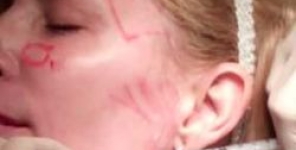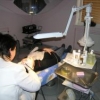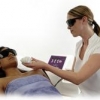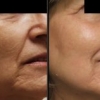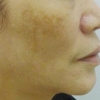Luce pulsata intensa per il trattamento delle teleangectasie
 Case report della malattia di Behçet con coinvolgimento vascolare superficiale
Case report della malattia di Behçet con coinvolgimento vascolare superficiale
La malattia di Behçet (BD) è un disordine infiammatorio cronico ad eziologia sconosciuta e con manifestazioni cliniche variabili. L'allele HLA-B51 è il fattore genetico che vi si associa più frequentemente. Inoltre, le lesioni mucocutanee (afte orali, afte genitali, lesioni cutanee come la pseudofollicolite) costituiscono il segno distintivo della malattia, ma possono essere coinvolti anche il sistema nervoso centrale, gastrointestinale, vascolare ed altri. In questo articolo riportiamo il caso di un ragazzo affetto dalla malattia di Behçet che presentava delle manifestazioni minori (vascolari superficiali) della BD come le teleangectasie del viso e la striae rubra nella parte interna delle braccia e a livello dei fianchi: per gestire queste manifestazioni, abbiamo sottoposto il soggetto ad un ciclo di terapia con Luce Pulsata Intensa (IPL). I nostri risultati hanno dimostrato che l'uso dell'IPL rappresenta un trattamento sicuro ed efficace per le teleangectasie e la striae rubra, anche nella condizione clinica complessa della malattia di Behçet. Infatti, i trattamenti sono stati ben tollerati, non sono stati riportati segni di cicatrizzazione o di iper/ipopigmentazione e abbiamo ottenuto un significativo miglioramento delle lesioni in termini di colore e dimensioni.
Storia della pubblicazione:
Titolo: Intense pulsed light in the treatment of telangiectasias: Case report of Behçet's disease with superficial vascular involvement
Rivista: Journal of Cosmetic and Laser Therapy. doi:10.3109/14764172.2013.854634
Autori: Paolo Fioramonti , Pasquale Fino , Ida Ponzo , Martina Ruggieri & Maria Giuseppina Onesti
Affiliazioni:Department of Plastic, Reconstructive and Aesthetic Surgery, University of Rome Sapienza, Policlinico Umberto I, Rome, Italy
Abstract:
Behçet's disease (BD) is a chronic systemic inflammatory disorder of unknown etiology with variable clinical manifestations. HLA-B51 allele is the most strongly associated known genetic factor. The mucocutaneous lesions (oral aphthae, genital aphthae, skin lesions such as pseudofolliculitis) constitute the hallmark of the disease, but also gastrointestinal, vascular, central nervous systems, and others may be involved. We report a case of a young man affected with Behçet's disease who presented facial telangiectasias and striae rubra in the inner region of his arms and at the level of his hips, as uncommon minor superficial vascular manifestations of BD. To manage them we have subjected the patient to a cycle of Intense Pulsed Light (IPL) therapy. Our findings showed that the use of IPL is a safe and effective treatment for telangiectasias and striae rubra, also in the complex clinical condition of Behçet's disease. In fact, the treatments were well tolerated, no sign of scarring or hyper/hypopigmentation was reported and we obtained a significant improvement of the lesions in terms of color and size of them.
